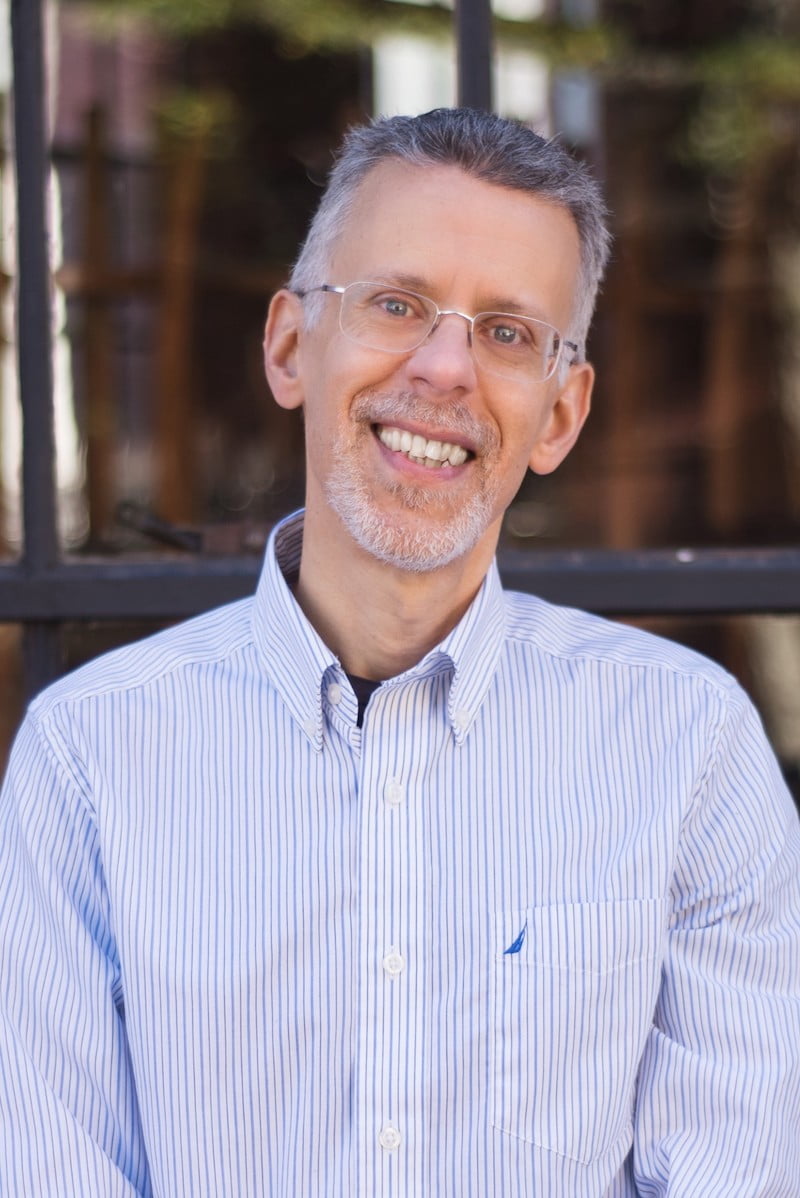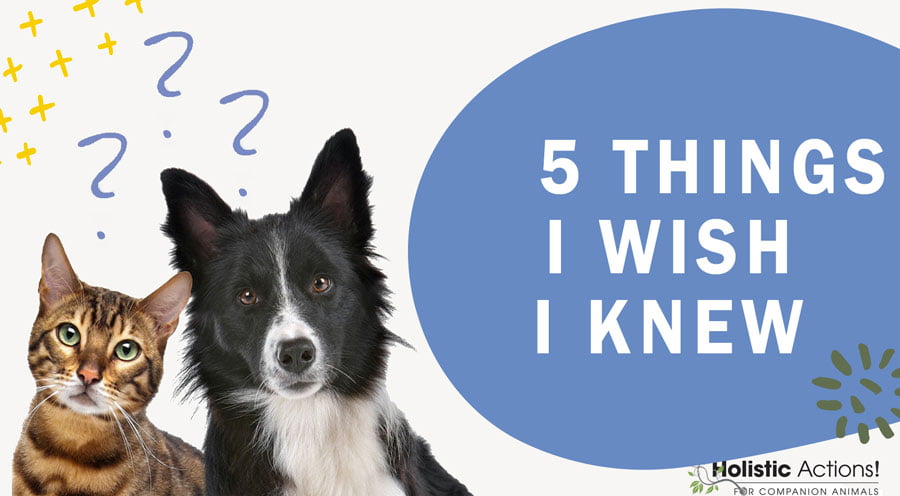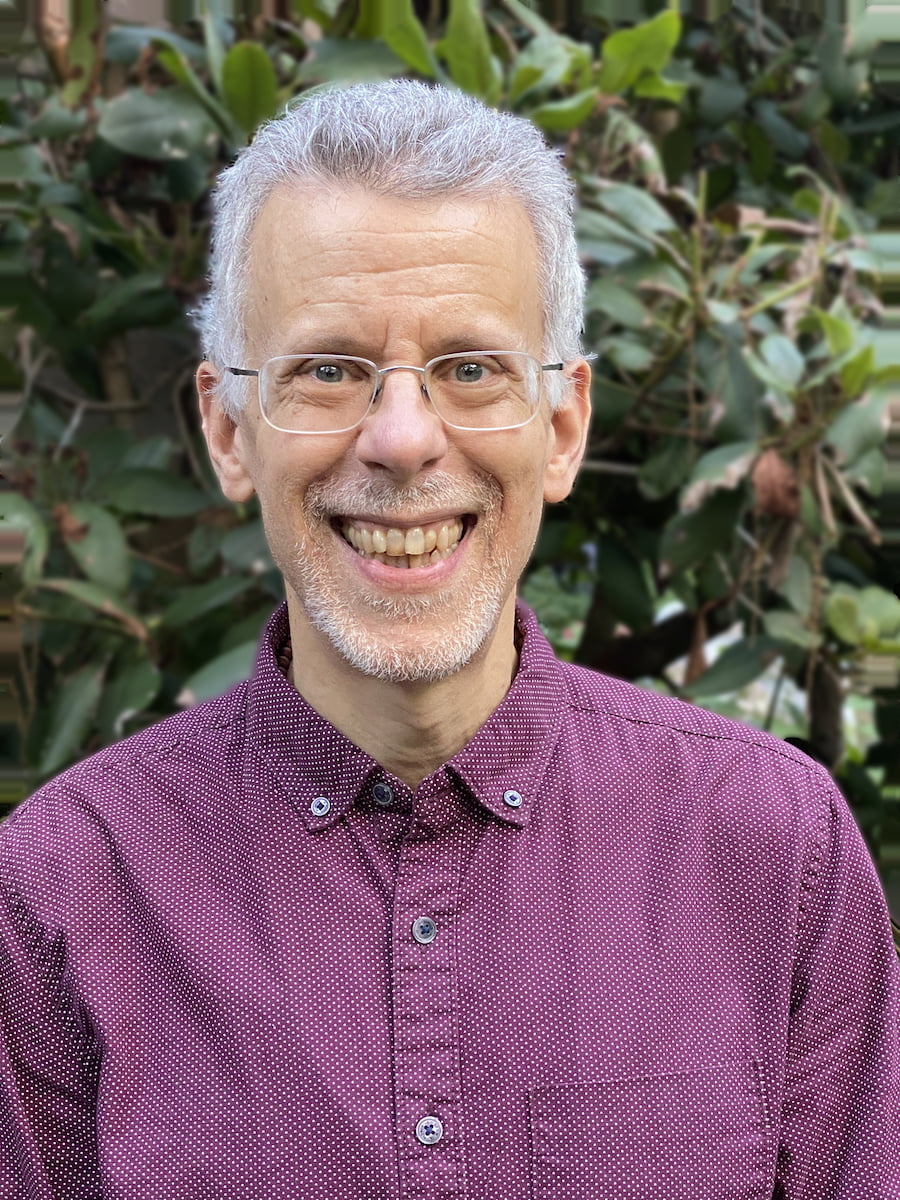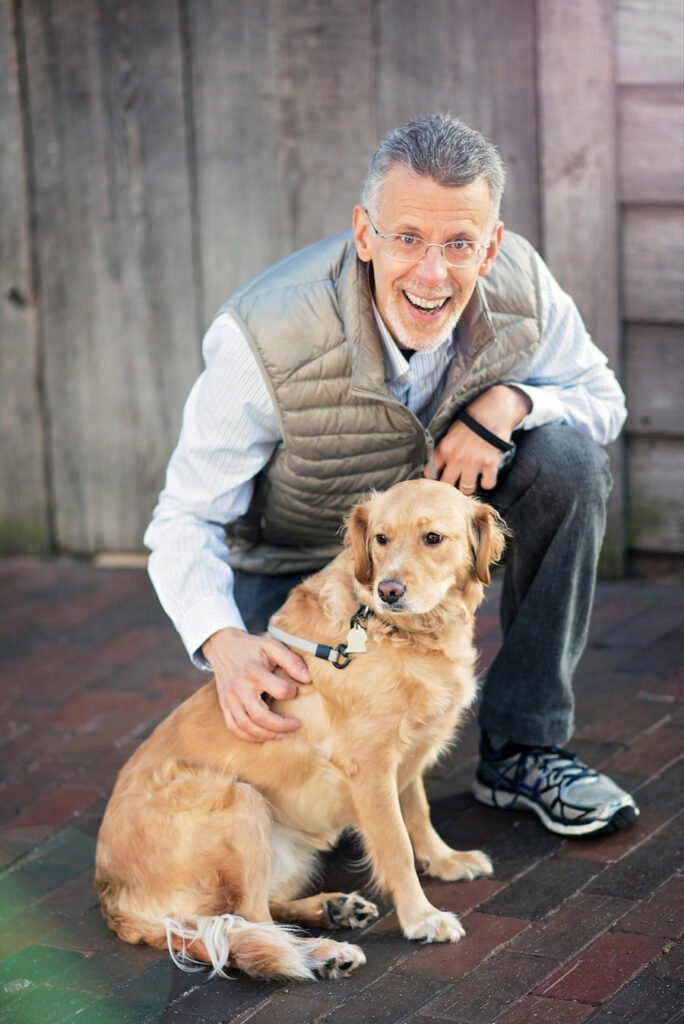An Interview With Luke Kervin. Published in Authority Magazine, Medium. August 19, 2021

The third biggest thing I wish I’d learned in vet school is the natural resilience and regenerative ability of the body. (Again, this goes equally for people and pets.) For example, my own rescue pup, Archie, had a Lyme kidney disease diagnosis. His immune system and kidneys improved from BEAMing, breathing, targeted nutritional support, and other healing modalities that seemed to activate natural healing mechanisms without suppressing the body’s innate healing abilities.
As part of my series about healthcare leaders, I had the pleasure of interviewing Jeff Feinman.
Jeff Feinman is a research-oriented veterinarian and molecular biologist who for more than 40 years has applied holistic approaches to health and healing to improve his pet patients’ quality of life and to successfully manage his own symptoms from a genetic disease. His articles have been published in peer-reviewed journals and some can currently be found on the holisticactions.com blog. He is the founder and teacher of Holistic Actions!, an online learning center, resource hub, and petcare community that educates and empowers pet parents and guardians to give their companion animals their healthiest, happiest, and longest lives.
Thank you so much for joining us in this interview series! What is your “backstory”?
You’re welcome, and thank you so much for the honor and privilege of inviting me. I am super excited and grateful to talk with you today!
Before I say anything else, I want to draw your attention to my hyphenated pronunciation of the word dis-ease that you’ll hear throughout this interview. I do this to emphasize that dis-ease is not a static “thing” but a dynamic process and an embodied experience.
Dis-ease is always much more than a matter of solving a “mechanical” problem with a technological solution. The true significance of dis-ease can be found in the fact that there is always a whole being there who is living with dis-ease. And it is to this whole being — whether animal or human — to which we must direct our care, attention, and effort. It will not do to simply focus on a “broken” part, we must attend to the whole — to the whole person or animal and the whole lifeworld from which their dis-ease has appeared and in which it must be addressed, alleviated, and ideally, “re-solved.”
That said, my backstory begins with attempting to solve the mystery of my own dis-ease. As with all health challenges, the story begins with symptoms and starts in 1975 when I was only fourteen years old.
At this time, I began having scary “attacks” where my muscles sporadically stopped responding to my brain. In other words, with seemingly no warning, I began experiencing severe disruptions in my motor function and temporary partial paralysis. This caused me to stumble and slur my speech as though I was intoxicated.
Needless to say, these attacks were very distressing to me and my parents. And although I said they occurred with no warning, this is not strictly true: they seemed to occur in response to a physical or emotional stressor. As a teenager, I was naturally shy and super sensitive, but the bullying I experienced (even before my symptoms began) caused me to develop severe social anxiety and a phobia of drawing attention to myself. Ironically, the symptoms I developed could not help but draw the negative attention to me that I most feared, taking things from bad to worse in a vicious cycle.
In an attempt to hide my symptoms, I avoided situations that might trigger them, and learned methods to manage them. My attempts were effective enough that only those closest to me were aware that I could experience these attacks of partial paralysis and loss of motor control. To everyone else, I was just a weird and quiet outsider without many friends.
You might find yourself wondering, well, what was wrong with you? What was behind your symptoms? What was your diagnosis? Naturally, my parents and I were wondering the same thing. After many tests were conducted, my “diagnosis” came back as MUS (Medically Unexplained Symptoms). This marked the beginning of living for more than 45 years with what I and others viewed as a mystery dis-ease.
But in some strange way, the fact that I lived without a proper diagnosis for so many decades would determine my destiny as a molecular biologist and holistic veterinarian. Because no one was able to get to the bottom of my symptoms, I essentially set off on a lifelong quest to solve my own medical mystery.
This meant that I would spend years doing everything in my power to develop the medical expertise to understand and treat what ailed me. This also meant doing what the dozens of medical professionals I had already consulted with had failed to do: pay exquisite and often excruciating attention to my symptoms, regarding them as breadcrumbs to a better quality of life I could not yet see but somehow knew I could reach. Last, this meant using my symptoms as the basis for running experiments on myself, tracking and attempting to interpret changes in them to gauge the efficacy of my interventions.
The first of these experiments was conducted with my best friend Neil. I had read in a book about ways of influencing the autonomic nervous system by raising the body’s energy and heat, and together, we decided to see if there was anything to this. We ran the protocols described in the book and then set out to test its effect.

We stood on a street corner on a bitterly cold winter day and removed our jackets to see what would happen. We waited some time and remained impervious to the cold. We figured we’d take it a step further and shed our shirts as well, discovering that the effect remained.
To be fair, the effect didn’t last long. But we had generated some interesting data. Yes, our sample size was tiny and our experiment poorly controlled, but it was suggestive that there might be more to the effects than just magical thinking or mumbo jumbo. (And since this time, the protocols that we ran have been scientifically verified in the lab and publicly demonstrated by such well-known figures as Wim Hoff, aka “The Iceman.”)
Even before my mystery dis-ease began, I was attracted to science and wanted to become a veterinarian. In 1980, my journey led me to study and research molecular biology at the University of Pennsylvania where I was honored as a University Scholar. (This honor recognizes budding academicians based on their research or writings.) It was based on this recognition that I was allowed to submatriculate into any of the university’s schools. This included the incredible veterinary school from which I would graduate, and the ER in which I was introduced to emergency vet medicine.
It was this hands-on veterinary experience that made me realize I wanted to work in clinical medicine rather than in a lab. And since graduation, I have moved from emergency medicine to housecall practice to holistic medicine.
Throughout my time at university, and long afterward, I continued to struggle and experiment with my own medically unexplained symptoms, though the headway I seemed to make was limited. A small but significant breakthrough occurred when I was introduced to holistic veterinary medicine by a client. She had successfully treated her pet’s arthritis using a “medication” I had never heard of before: omega-3 fatty acids. I was skeptical, but because her MD had prescribed them, I looked into this remedy further. Would it benefit my own patients, I wondered? It turned out, in many cases, it did.
So many, in fact, I went on to study and add other supplements to my clinical tool chest, which led to further holistic research and experimentation with my own symptoms. It was at this point that I truly became my own walking lab experiment. I explored holistic strategies and applications that were far outside of the “box” I’d been kept in at university.
The holistic strategies and applications resulted in incredible and unprecedented improvements to my own symptoms. Not only this, when I investigated the historical epidemiological data, I became convinced the strategies and applications I was using could also prove profoundly beneficial to my patients. Newly re-inspired, I enrolled in 1999 in Dr. Richard Pitcairn’s Animal Natural Health Center’s Professional and Advanced courses in holistic veterinary training. This was the beginning of my journey that brought me to understand symptoms as clues for providing personalized treatment.
Fast forward to 2016 and 25 years of combining conventional and holistic veterinary medicine. It was at this time that I launched Holistic Actions! (HA!), an online learning platform, resource center, and community hub that teaches pet parents the same strategies and applications I used successfully with myself and my animal patients.
At HA!, we are dedicated to improving dogs’ and cats’ quality of life through natural and integrative approaches that increase and optimize cellular vitality and balance. We use a simple, practical protocol for empowering pet parents and guardians called Holistic Medical Decision Making (HMDM). It’s designed to help them track and interpret symptoms, using them as powerful clues for guiding early detection and holistic treatment of dis-ease.
In case you’re wondering, it turned out my mystery dis-ease wasn’t so mysterious after all. It just took the right person to see what had been hidden in plain sight all along. In 2010, a brilliant researcher and neurologist at Columbia University diagnosed me with a form of “SCA” (spinocerebellar ataxia), a group of genetic and degenerative dis-eases that have variable effects ranging from death and disability to Parkinson’s type disorders.
Finally having a name and explanation for 45-years worth of symptoms was a tremendous relief, and the emotional effect it had on my life was almost indescribable. For the first time I felt I was no longer living with an unknown enemy, and I could finally trust that my symptoms were not something to fear but something to learn from.
Even though I would learn that there was no known cure or safe treatment to heal me entirely, I had been successful in my quest to manage my symptoms and to at last solve my own medical mystery. This allowed me to let go of the anxiety and restrictions to my own happiness and quality of life.
The long and short of it is this: it was my own symptoms and relentless quest for decoding them in the service of a better quality of life that brought me to where I am today. My own symptoms — difficult as they were and as alone and hopeless as they could make me feel at times — were not my enemy but a trustable guide. Even when it seemed they were leading me nowhere, by continuing to follow them, I was set off on a grand adventure that with enough patience, perseverance brought me to the people, pets, and work I love.
Can you share a story of something interesting that happened to you since you started your career?
Oh, there are so many super interesting stories! My favorites are the anecdotes that demonstrate the body’s amazing ability to heal itself. For example, one of the wonderful Holistic Actions! (HA!) students recently helped her pup resolve a mast cell tumor using the power of prayer. And many other pet parents have seen similar “miracles” from the power of intention and strategies like therapeutic sniff walks and other happiness-promoting activities. (All of which are effective interventions for increasing health by raising cellular energy.) I’ve been honored to discuss many of the seemingly miraculous improvements with HA! students, members, and clients on an almost daily basis.
Can you share a story about the funniest mistake you made when you were first starting? Can you tell us what lesson you learned from it?
Thanks for this question! It helped me to remember a happy and humorous story that feels good to recall and share. Thirty years ago, I did a housecall for a female guinea pig that had a bad smell coming from her mouth and was having trouble eating. Upon initial inspection, I told her mom that I thought Happy (the guinea pig’s name) had an oral tumor. But I always like to push “paws” and take a second look with fresh eyes.When I examined Happy again, it turned out that what perfectly resembled a tumorous mass was actually a piece of decaying carrot! I was relieved and tickled to realize that Happy’s problem was not as severe as it first seemed! After removing the offending carrot, it wasn’t just Happy that squealed with delight! The big lesson I learned was to stay humble and curious, to keep an open mind, and re-examine and re-evaluate, no matter how initially sure you might be of your diagnosis. Are you working on any new or exciting projects?Yes! I am super excited every day to share the three protocols that keep pets in tip top shape and upon which HA! is based! These are the Terrain Optimizing Protocol (TOP), Happiness Protocol, and Holistic Medical Decision-Making (HMDM) Protocol.
Holistic Medical Decision-Making is exactly what it sounds like: a protocol for helping pet parents and guardians make highly informed, strategic, and individualized medical decisions for their companion animals. Often pet parents or guardians will first come to the Holistic Actions! platform with questions like, gosh, I don’t know whether I should try drug A or supplement B, C, and D for my dog, or, my conventional vet feels like surgery is the best bet for my cat, but I’m not so sure because I’ve found research online that suggests otherwise. But the HMDM protocol — especially in conjunction with the one-on-one consultation that’s available through the site — gives them the tools, resources, and support they need for cutting through the confusion and confidently making medical decisions for their pet.
Now, If you look “under the hood” of the HMDM protocol, you’ll see it’s based on a scientific framework called the Vitality and Balance System (VBS). VBS is an “outside the box” model based on molecular individuality, described scientifically as the exposome, that helps pet parents and guardians assess and improve immune balance and resilience in companion animals. The Vitality and Balance System also helps us to better understand susceptibility (why one pet gets sick when exposed to a pathogen and another does not). Last, it ensures we see the “forest” (quality of life) through the molecular details of the “trees” (symptoms) so pets can live their best lives, no matter their diagnosis. (After all, a diagnosis is simply the name we assign to a specific set of symptoms.)
Even though the VBS is based on hard science, it is easy and gratifying to implement. For example, the Happiness Protocol and Terrain-Optimizing Protocol can help speed healing and reduce the risk of dis-eases (imbalances). We share these foundational protocols freely on the HA! Blog. And through the support of the Holistic Actions Foundation (HAF — sorry for all the acronyms) we help educate pet parents, regardless of their socioeconomic status. HAF also exists to give support to veterinarians who want to implement the VBS in their practices.
None of us are able to achieve success without help along the way. Is there a particular person you’re grateful for who helped you get where you are today? Can you share a story about this?
Oh my gosh, there are so many! Above all I am super grateful to my wonderful wife Amy. She is an incredibly loving and supporting muse who has tolerated many an hour of “eye rolling” dinner conversations about pets, energy, and symptoms. She gets lots of eye exercise! I am also incredibly grateful to my friends and teachers in the Holistic Actions! community. I am grateful to all of my teachers from Mr. Callahan in 5th grade science to Drs. Neville Kallenbach, Manjusri Das, Peter Jezyk, David Little, Paul Herscu, Don Patterson, Becky Kirby, Richard Pitcairn, and especially my current mentor, master naturopath Dr. Andre´ Saine. In addition, HA! has survived and thrived thanks to our fantastic facility of holistic vets and pet professionals: Christina Chambreau, Sara Fox Chapman, Jen Bridwell and Gail Pope. Last, but not least, thanks to Aruna Tumpyte for her web wizardry!Is there a particular book that made an impact on you? Can you share a story about this?
It’s hard to choose because there are so many! If I had to pick one, it would be a book that my mom also loved back in the 70s. It helps connect the power of positivity and intention with healing. The book is “Anatomy of an Illness” by Norman Cousins. It’s about how Mr. Cousins healed himself from a painful and crippling condition using laughter and positivity/happiness. This approach has been shown to be so effective, that UCLA named their Psychoneuroimmunology Center after him. They’re doing some incredible work into molecular mechanisms without losing sight of the bigger picture of happiness. They’re doing these super cool studies about how the experience of prolonged loneliness can turn off “good” genes and turn on “bad” ones that make people far more vulnerable to dis-ease. My brother doesn’t live far from there, so hopefully I’ll be visiting soon
How have you used your success to bring goodness to the world?
Hmmm. Hopefully I have brought some goodness to the world with Holistic Actions! In the past five years HA! has had the privilege of empowering more and more pet parents to help their companion animals live healthier, happier, and longer lives.
HA! does this by teaching pet parents ways to fine-tune their pets vitality and balance using symptom clues related to Behavior, Energy, Appetite, Mood (BEAM). Clinically, these symptoms provide pet parents with a simple and practical way to assess, track, and interpret symptoms. This enables them to provide the pet in their care with personalized applications of conventional and holistic veterinary medicine. The end goal here is to reach a 4P model of medicine for pets: Personalized, Predictive, Proactive, and Participatory.Through the non-profit Holistic Actions Foundation we bring our approach, tips, and tools to everyone, regardless of income. HA! Academy scholarships and educational outreach helps pet parents around the world affordably learn more about safe, effective, easy-to-implement holistic options. Our goal is to help empower 1,000,000 pet parents by 2025.
Can you please give us your favorite “Life Lesson Quote”? Can you share a story about how that was relevant to your own life?
“We miss more by not seeing than we do by not knowing. Always examine the back. Observe, record, tabulate, communicate.” — Sir William Osler, groundbreaking physician, philanthropist, and celebrated “Founding Father of Modern Medicine” and Johns Hopkins Hospital.
A life lesson I started learning at a young age was that I missed a lot by making unseen and unquestioned assumptions. Another way to say this is that I realized there is a big difference between “watching” and actually “seeing.” “Watching” is a passive phenomenon (similar to how our mind works when we watch a sitcom, or in my case, one of the magic shows I loved as a child).
On the other hand, “seeing” is an intensively and intimately active phenomenon where we directly participate in the process of learning through bringing our curiosity, critical thinking, and sense of wonder to bear. If you simply “watch” a magic show, you’ll never come to see how the illusions are actually performed. And for those of us who are interested in learning how to perform our own magic by peering behind the curtain (that is, helping our patients heal), it’s not enough to simply watch. We have to learn how to see. This principle never ceases to amaze me.
Many “Oslerisms” (quotes from Sir William Osler) like the one above, resonate deeply with me. Especially now that I’m a doctor and have had the privilege of visiting the Oster library at McGill University every year (until 2020) during annual seminars there about activating natural biologic healing mechanisms based on observation.
Dr. Osler’s medical work highlights the importance of observation for doctors by life lesson writings such as:
“Medicine is learned by the bedside and not in the classroom. Let not your concepts of the manifestations of disease come from words heard in the lecture room or read from the book. See, and then reason and compare and control. But see first. No two eyes see the same thing. No two mirrors give forth the same reflection. Let your word be your slave and not your master.”
Can you share your top three “lifestyle tweaks” that will help people and pets feel great?
Sure! I’d be honored to speak to things that I can personally attest have reliably increased quality-of-life in myself and my pet patients through what we hypothesize as stemming from an increase in cellular energy. Along with each tweak, I’ll give personal examples of each. First, is connecting with nature, such as when I set out with my dog, Archie, on a sniff walk. Second, is focusing on happiness, such as when Archie and I play a game of fetch or I pet my kitty, Tigger. Third, is engaging with other people, pets, and nature. These three tweaks of cellular health and energy (CHE) all share the common thread of harnessing the power of the breath. In Traditional Chinese Medicine, they’re thought to bring more Chi (life force energy) into our cells to keep our bodies vital and balanced.
For myself, I start every day by BEAMing and breathing for 20 minutes. (BEAMing means engaging in any activity that can have beneficial effects on Behavior, Energy, Mood, or Appetite.) This just involves smiling deeply while doing deep rhythmic breathing. It is based on the well documented SKY Breath Meditation from the Art of Living Foundation.

What are your “5 Things I Wish Someone Told Me Before I Started” and why?
Thanks for asking! I’m especially excited to talk about this since I’ve dedicated my life to sharing these five things with anyone who will listen! My own belief, based on decades of observation, experimentation, and application is that they might even hold the key to integrating conventional and holistic medicine.
1. By far, the biggest thing I wish I’d learned in vet school is the importance of conservation of (cellular) energy in the body. Building and preserving energy and vitality produces the balance (equilibrium) that’s not only necessary for simply remaining alive but for living fully and joyfully. The details and implications of this principle exceed what I can explore here, but doctors and scientists now know that cellular energy is the basis of life and the difference between life and death, as well as the difference between merely “existing” and life well lived. (And this goes equally for both people and pets!) There are so many proven strategies for people and pets to increase their cellular energy through positive lifestyle changes. This can occur through even the smallest of changes: eating fresh food, “pet and purr” sessions, taking Therapeutic Sniff Walks, promoting happiness with play and enrichment activities. One spectacular example of how happiness alone can have dramatic effects on cellular function is the story of the paralyzed rescue pup who went from being paralyzed to walking and running just by BEAMing.
2. The second biggest thing I wish I’d learned in vet school was the true significance of signs and symptoms and their importance for keeping patients healthy. I really, really wish we were taught to regard symptoms as valuable clues that can be used to aid early detection, monitoring, and treatment of imbalances that can eventually show up as dis-ease. In vet school, we were taught to look at symptoms from a strictly diagnostic perspective. But after this, they served no purpose and were seen to have no value. In fact, symptoms were often treated as the enemy, with the aim being to reduce or eliminate them. In my personal and clinical experience, rather than regarding symptoms as an enemy to be feared or suppressed, we can view them as a good friend who is simply trying to communicate something crucially important to us. Behavior, Energy, Appetite and Mood are exquisitely sensitive indicators of homeostasis (balance). For example, Sue, the pet parent of one of my patients, successfully used BEAM to detect early signs of Lyme kidney disease in her pup.
3. The third biggest thing I wish I’d learned in vet school is the natural resilience and regenerative ability of the body. (Again, this goes equally for people and pets.) For example, my own rescue pup, Archie, had a Lyme kidney disease diagnosis. His immune system and kidneys improved from BEAMing, breathing, targeted nutritional support, and other healing modalities that seemed to activate natural healing mechanisms without suppressing the body’s innate healing abilities.
4. The fourth biggest thing I wish I’d learned in vet school is the power of the breath. Breathing experts like Wim Hoff and some yogis have amazing control over seemingly automatic functions like blood pressure, immunity and blood test results. As for how breath-based activities can dramatically benefit our canine friends, take the case of Koby, a 15 year young pup with severe, end-stage heart dis-ease. Despite his challenges, the introduction of increased sniff activities and the snuffle mat (Koby eventually had five!) greatly enhanced his happiness and quality of life.
5. The fifth and last thing I wish I’d learned in vet school is the amazing benefits of feeding ourselves and our pets living, fresh, unprocessed foods. We all know the saying, you are what you eat, and we have this on the soundest of scientific evidence, clinical experience, and (for goodness sake) our common sense. Feeding our pet whole, vital food and understanding that food can function as medicine has helped resolve health challenges for many of my pet patients and my own celiac disease. One example of how powerful the introduction of fresh food can be is the case of a kitty with vomiting and diarrhea symptoms and an IBD diagnosis. Just replacing her commercially prepared diet with fresh food helped her body naturally recover and resolve her symptoms.
If you could start a movement that would promote the greatest amount of wellness in the greatest number of people, what would that be?
That would be the movement to integrate holistic and conventional veterinary medicine. Their foundations are very similar yet they are currently practiced very differently. Modern medicine is miraculous in many ways yet doesn’t have all the answers. This movement would help more pet parents and vets learn the importance of maintaining and regaining vitality and balance for pets. By that I mean that I’d love them to learn that science has confirmed the importance of the energy (vitality) to keep pets at ease (balanced). That’s it!
We are very blessed that some of the biggest names in Business, VC funding, Sports, and Entertainment read this column. Is there a person in the world, or in the US whom you would love to have a private breakfast or lunch with, and why? He or she might just see this if we tag them 🙂
It’s a toss up for me. I’d love to chat with Wim Hoff and his team about the healing power of nature for pets and people, but I’d also love to chat with vet Dr. Marty Becker who started the “Fear Free” movement. It is improving the happiness and quality of life in a huge number of pets around the world by teaching strategies that reduce stress during vet visits.
I would also love to have tea and reconnect with Cheryl Howard. In the 80s and 90s I made many housecalls to Ron and Cheryl’s little farm where I had the privilege to get to know her and the family’s pets. I have fond memories of our time together including having Fritz — their sweet, smart pot-bellied — as a houseguest. Cheryl was a big fan of integrative approaches to health and healing — combining natural and holistic medicine with conventional medicine. I’d love to talk to her about getting the word out about these strategies to help improve pets’ quality of life.
What is the best way our readers can follow you online?
The best way is to join the HA! community at holisticactions.com. All Access membership includes a free, monthly, one-on-one, individualized consultation call with me so you can get your petcare concerns addressed directly and personally. (Incidentally, you also get access to weekly live Empower Hour! webinars with leading veterinary and petcare experts, and a Q&A forum at the HA! website devoted to helping pet parents make informed choices so they can maximize their animals’ happiness and longevity.) We also have a passionate and dedicated community on Facebook and Instagram, as well as valuable content on our YouTube channel that provides answers to frequently asked questions in order to empower you to take charge of your pet’s wellness journey.
Thank you so much for these wonderful insights!
You’re very welcome. Doing this interview has truly been my honor and pleasure. Thank you, and your readers!
Written by
Luke Kervin is the Co-Founder and Co-CEO of PatientPop, an award-winning practice growth technology platform.


